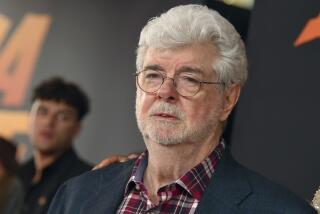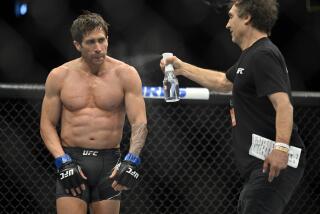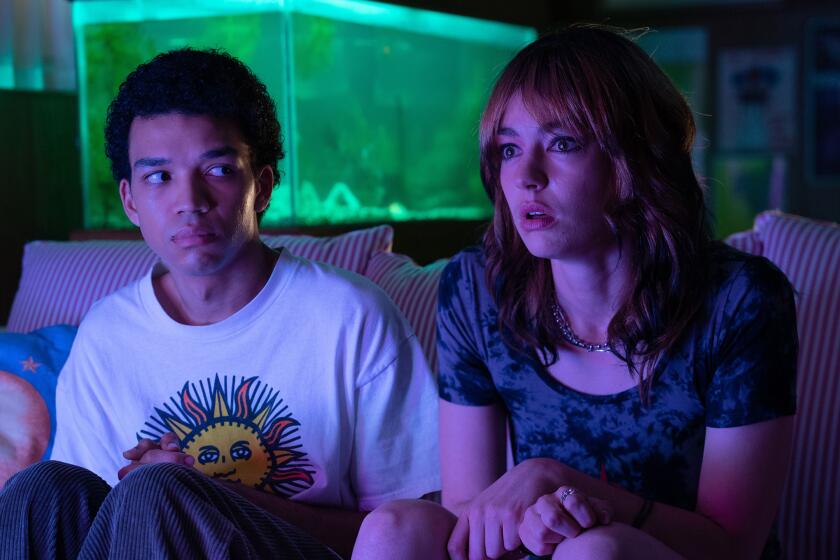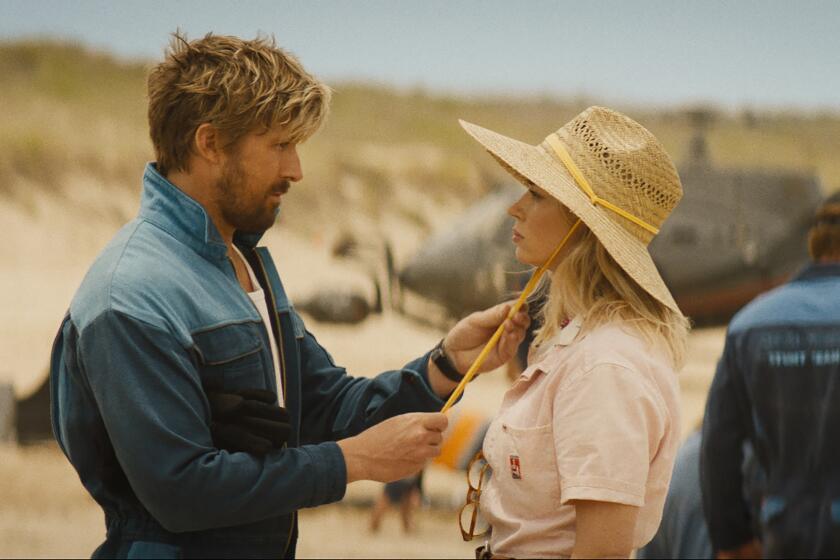Can corporate Hollywood make peace with voice-minded directors? The fight continues with ‘Star Wars’
The news was stunning. Four months into production — and less than a year before it’s due in theaters — the Han Solo “Star Wars” spinoff was losing its directors.
Phil Lord and Chris Miller were being removed from the project because of what Lucasfilm chief Kathleen Kennedy was calling a difference in “creative vision” and the directors dubbed “creative differences” — even as no one seemed to want to call it that. A bevy of names, particularly old studio hands like Ron Howard, quickly were thrown into the rumor mill as contenders to take over the young Han movie, set early and apart from the classic “Star Wars” timeline.
But no matter the fate of the Solo effort, the incident shines a light on a battle contemporary Hollywood can’t seem to find a truce for.
For all the heat Hollywood takes about serving up homogenized blandness, the hive mind stills wants independent voices. Or at least it thinks it does.
Lord and Miller have been among the hottest directors in the studio system in recent years, shepherding “The Lego Movie” and a “Jump Street” renaissance to unlikely blockbusterdom.
More notably, they are some of the most brazen filmmakers working within that system: “Lego” managed to be a creation of great meta weirdness despite the Warner Bros. imprimatur. And though it could have easily settled into action-comedy genericism, “Jump Street” — particularly “22 Jump Street” — followed an equally quirky template. Fewer directors have found mainstream success by going their own way; few better demonstrated the idea that modern Hollywood can have its auteur cake without eating it at the box office.
The decision to hire the playful pair provided (along with “Star Wars: The Last Jedi” director Rian Johnson) some of the greatest evidence that the franchise’s stewards were willing to take some gambles in their march toward global box-office supremacy.
And now the decision to fire them is, seemingly, proving the opposite.
Directors part ways with projects all the time, even late in the game (though very rarely this late). The next few days will yield more about what specifically the clash was about, and with whom. (Already dueling trade reports had it with Kennedy or with writer Lawrence Kasdan, a Hollywood juggernaut in his own right.) But the very fact that there was a clash speaks to a tension that’s long been percolating in this franchise era and bubbling up lately with more regularity.
For all the heat the movie business takes, often rightly, about serving up homogenized blandness, the Hollywood hive mind in this franchise era stills wants independent voices. Or at least it thinks it does. Independent voices, it believes, will mean a better movie, or are a little more worth trusting, or maybe can simply help some members of that hive mind ease their creative conscience.
But when it comes to actually bringing a movie to fruition, studios often balk at the loss of control those voices tend to engender. We’ve already seen this on the two most recent “Star Wars” movies. The industry murmurings of J.J. Abrams clashing with Disney and Lucasfilm on “The Force Awakens” were loud and persistent. A little while later, Gareth Edwards was relieved of his duties during the reshoot portion of “Rogue One.”
And Joshua Trank’s planned spinoff focused on bounty hunter Boba Fett fell apart before it was even officially announced. (No such tumult has occurred yet with “Star Wars: Episode IX” director Colin Trevorrow or with Johnson, though after the former’s “Book of Henry” received a critical roasting and bombed at the box office this weekend, a different sort of question has been asked.
MORE: Everything we learned about ‘The Last Jedi’ from the Star Wars Celebration panel »
From the first Abrams pin-drop a few years back, the question has loomed over the current crop of “Star Wars” movies: are these director-driven works that happen to come out under a conglomerate banner? Or corporate entertainment with a big name just happening to sit in the director’s chair?
This can be seen well away from “Star Wars” tooTrank became a cautionary tale as he clashed with Fox on the studio’s “Fantastic Four” reboot. Michelle MacLaren didn’t end up directing “Wonder Woman” at DC/Warner Bros. And Ben Affleck dropped off directing that studio’s upcoming Batman movie before we could get a glimpse of Gotham City by way of “The Town.”
Modern Hollywood generally has competing impulses: the desire at once to be distinctive and commercial. When they truly clash, the latter side wins out. It’s not just Disney.
The battle simply takes particularly fraught form at the studio giant, which houses an unusually high ratio of Hollywood’s most important franchises via Lucasfilm, Marvel Studios and Pixar. Often the movies are more expensive; in many cases, they seek a larger global footprint. Frequently, they also come in a more sprawling universe, with each piece of an interlocking mythology forcing any one director to play an increasingly tenuous game of Jenga.
Not for nothing has this battle also played out at Disney’s Marvel, where each subsequent movie seems to add one more block to the tower, deterring freewheeling hands. Edgar Wright, director of the upcoming “Baby Driver,” clashed with the studio over “Ant-Man” before leaving, while Ava DuVernay walked away from an offer to direct “Black Panther” before Ryan Coogler took over. Joss Whedon got to the end of two “Avengers” movies, though not necessarily easily.
There are studio franchises and there are studio franchises. Lord and Miller were able to navigate a certain kind of corporate mandate with their previous work. Warner Bros. was not really an animation powerhouse when the pair were making “Lego” there, allowing the film to slip through, especially at a lower budget. Sony in those early “Jump Street” days was run by Amy Pascal, who gave filmmakers (relatively) wide berth given the studio confines (something admittedly made even easier when the intellectual property isn’t already a billion-dollar franchise). But the walls gave way on Disney and “Star Wars.”
That’s not to say this a strict barbarians-at-the-gates narrative. Auteurs can be indulgent, and studio executives in some cases are right to push them in a less personal direction. As with so much in the cultural space, it isn’t always as simple as art-vs.-commerce.
Corporate Hollywood, after all, is still made up of plenty of people wanting to do good work. Kennedy herself comes with these bona fides: you don’t produce all those Steven Spielberg movies, or “The Sixth Sense,” or “The Diving Bell and the Butterfly,” and not have some serious artistic genes. But it’s also made up increasingly of people who need to make movies work on Wall Street first and on the screen second.
With the stakes growing, can they continue balancing the two? In recent years, they have tried to have it both ways — the billion-dollar receipts and $10 indie-ticket cred. Increasingly, it looks like the math doesn’t add up.
See the most-read stories in Entertainment this hour »
Twitter: @ZeitchikLAT
ALSO:
Every single L.A. Times ‘Star Wars’ movie review
Commentary: Why I cried through the fight scenes in ‘Wonder Woman’
New CAA study says diverse casting increases box office potential across all budgets
More to Read
Only good movies
Get the Indie Focus newsletter, Mark Olsen's weekly guide to the world of cinema.
You may occasionally receive promotional content from the Los Angeles Times.







